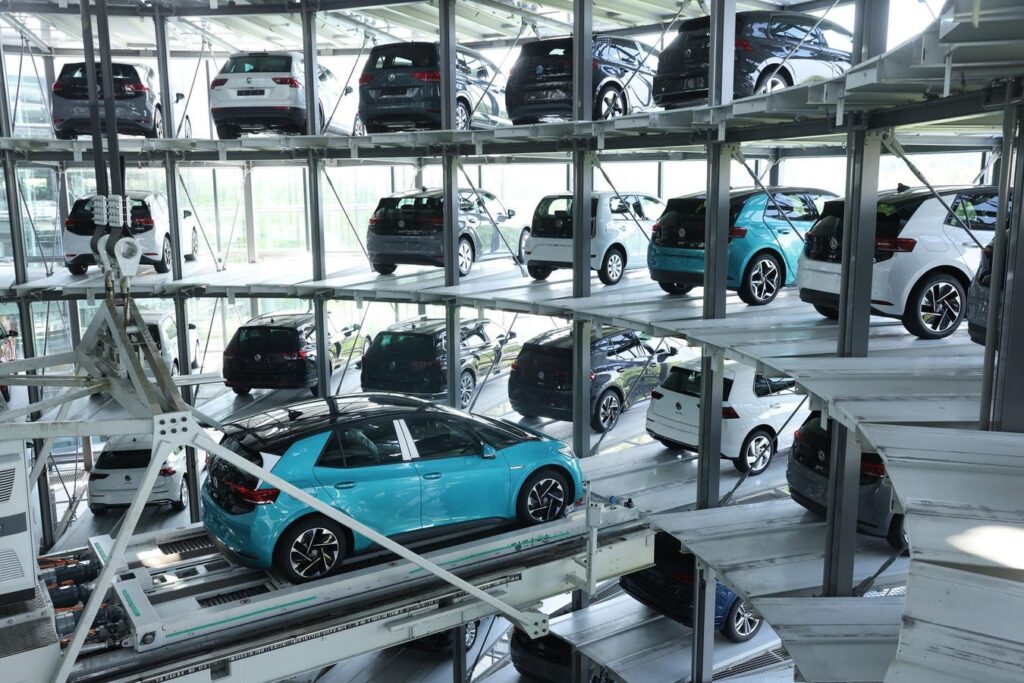Some Floridians have long been huge fans of one kind of electric vehicle that has a top speed of 35 mph and can’t legally be driven on many streets. Only recently have electric golf carts in the Sunshine State had to share garage space with Teslas and Rivians rather than Ford-450s and Land Rovers. According to the Department of Energy’s Energy Information Administration, renewables supply about 7 percent of Florida’s total in-state electricity net generation, with most of that from solar. Geography plays a significant role in consumer purchase of EVs, but it’s also a major factor in the implementation and economic impact of section 30D and its fellow Inflation Reduction Act credits. That’s by design.
When section 30D was first enacted in 2008, the credit was available for any EV, regardless of the location of its manufacturing or that of its parts. The IRA markedly changed that by adding geographic restrictions on where the critical minerals and battery components could come from and where final assembly must occur. The perennial flashpoints in section 30D are the foreign entity of concern rules that Treasury and the IRS released in December 2023 (REG-118492-23) and the critical minerals and battery components rules in the proposed regulations released in April 2023 (REG-120080-22).
Section 30D(d)(7) excludes vehicles placed in service after December 31 if any of the applicable critical minerals — including graphite, lithium, and cobalt — in the battery were extracted, processed, or recycled by a foreign entity of concern, as well as vehicles placed in service after December 31, 2023, if any of the battery components were manufactured or assembled by such an entity. China processes most of the graphite that goes into individual EV battery cells and 65 percent of the world’s lithium and cobalt. The United States is trying to gain a foothold in that production, as Energy Deputy Secretary David M. Turk explained to Congress in January.
Sen. Joe Manchin III, D-W.Va., has been critical of the proposed foreign entity of concern rules for section 30D since Treasury previewed them in its December 2022 white paper on how to determine the 40 percent threshold requirement for critical minerals extracted or processed in the United States or in any country with which it has a free trade agreement. The white paper’s approaches for the critical minerals and battery components requirements were included in prop. reg. section 1.30D-3(c)(17), which adds a 50 percent value added test to determine whether an applicable critical mineral is treated as extracted or processed in the United States or a free trade agreement country. That percentage applied only for 2023 and 2024, and the preamble to the April 2023 rules cautioned: “For later years, however, the Treasury Department and the IRS anticipate moving to a more stringent test.” Manchin has frequently noted that the 50 percent test halves the specified applicable percentage, undermining Congress’s intent.
The December 2023 proposed regs added details on how to trace critical minerals and battery components that comply with the foreign entity of concern rules. They added an exception for “non-traceable battery materials” as a transition rule. There is no mention of non-traceable battery materials in the statute, nor is there a specific grant of authority to write transition rules. Section 30D(e)(3)(A) requires Treasury and the IRS to “issue such regulations or other guidance as the Secretary determines necessary to carry out the purposes of this subsection, including regulations or other guidance which provides for requirements for recordkeeping or information reporting for purposes of administering the requirements of this subsection.” IRS Commissioner Daniel Werfel recently told the Senate Finance Committee that the IRS bases its authority to delay implementation in some circumstances on the Taxpayer Bill of Rights — specifically the right to pay no more than the correct amount of tax.
Another West Virginian, House Ways and Means Committee member Carol D. Miller, a Republican, doesn’t think the proposed foreign entity of concern rules go far enough to keep tax dollars from flowing to strategic adversaries. She introduced the End Chinese Dominance of Electric Vehicles in America Act of 2024 (H.R. 7980) to change the excluded entities in section 30D(d)(7). Under Miller’s proposal, an EV is ineligible for the credit if any component of its drive battery or any material in the battery “was extracted, processed, recycled, manufactured, or assembled by a prohibited foreign entity,” or the drive battery was “designed, manufactured, or produced using any process attributable to any licensing, royalty, service, or similar agreement with a prohibited foreign entity” where the estimated total contract cost exceeds $5 million.
Under the proposal, a prohibited foreign entity is any foreign entity of concern, any entity for which the government of a covered nation has the right or power to appoint or approve the appointment of a covered officer, or certain entities if 25 percent or more of their capital or profits interests are owned by any combination of the following: a covered nation, a foreign entity of concern, or any entity for which the government has approval or appointment power over covered officers; a citizen, national, or resident of a covered nation; and an entity organized under the laws of a covered nation. Miller’s bill is intended to reduce the number and strength of ties to covered nations that are permissible in the rules. The bill would effectively alter parts of the DOE’s proposed regulations defining foreign entity of concern (88 Fed. Reg. 84,082 (Dec. 4, 2023)).
Those regs define such an entity as an entity that meets the definition of a foreign entity and is either subject to the jurisdiction of a covered nation’s government or is owned by, controlled by, or subject to the direction of the government of a foreign country that is a covered nation. Ownership, control, and direction by a covered nation is established if either 25 percent or more of the entity’s board seats, voting rights, or equity interest are cumulatively held by another entity, directly or indirectly, or the entity has a licensing arrangement or other contract with another entity that entitles that other entity to exercise effective control over the extraction, processing, recycling, manufacturing, or assembly of the critical minerals, battery components, or battery materials.
Like critical mineral production and processing, the geographic distribution of EV production domestically isn’t uniform — states west of the Mississippi, except California and Texas, have received relatively few projects. The DOE touts over $35 billion in nationwide investments. Its investment tracker tool shows that as of late April, 23 EV assembly projects, 26 EV charger manufacturing projects, and 36 EV components manufacturing projects have been announced since the passage of the IRA.
For example, Honda recently announced $700 million for three projects at its EV Hub locations in Ohio, $300 million of which is listed by the DOE as being for EV assembly and the other $400 million for EV components. One of the Ohio projects will produce both internal combustion engine vehicles and EVs on the same line; another will have a single production line for EVs.
According to the DOE, the charger manufacturers are predominantly located along both coasts and in Texas, although one of the largest listed investments is a $150 million plan announced last year by EdgeEnergy Inc. to expand manufacturing in Ohio. The components projects are heavily clustered in the Midwest and Southeast, with 12 in Michigan and 13 spread out across Tennessee, North Carolina, South Carolina, Georgia, and Alabama. West Virginia has an EV assembly plant project that is expected to cost $5 million.
The uptake of EVs isn’t particularly uniform either. Professionals on both coasts like Lucids, Rivians, and Teslas because they make reasonable commuter cars and a statement in the parking garage. The DOE is attempting to convince other types of car buyers that an EV will save them money, but there might be blind spots in that effort that are bigger than the ones on Tesla’s
Tesla
Read the full article here
















